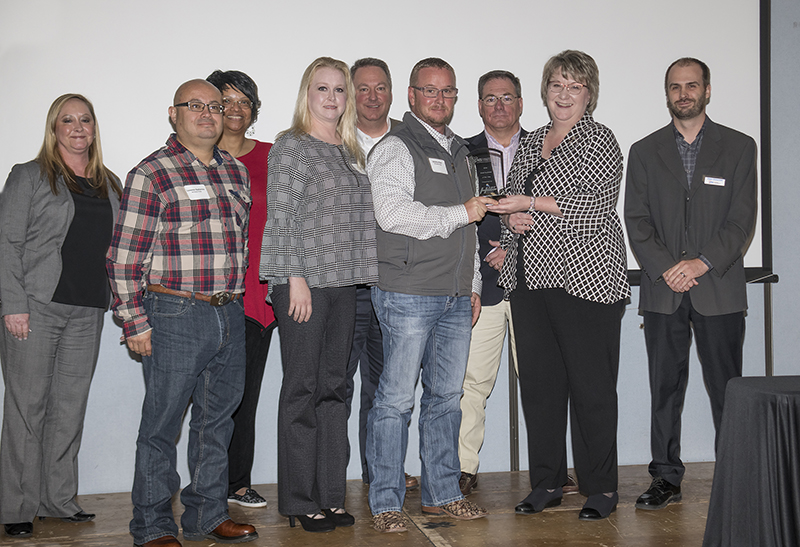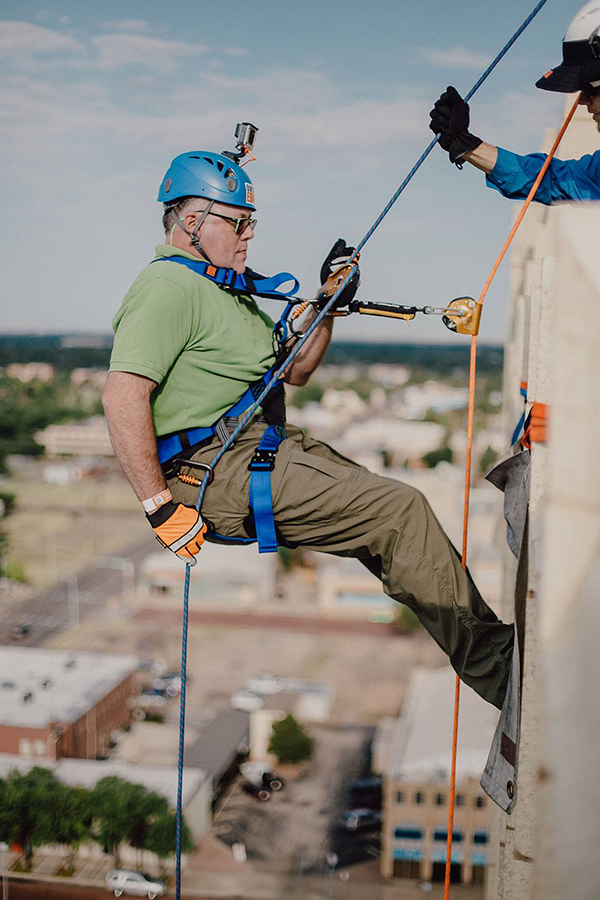Pantex Blog
CNS celebrates small business success
At the Amarillo Small Business Partnership Awards ceremony held Oct. 11, Consolidated Nuclear Security, LLC recognized Hart Moving and Storage, Inc. of Lubbock as the company’s small business partner of the year.
“Each year, we highlight a small business that models our CNS values – integrity, trust, respect, teamwork, and excellence,” said Ryan Johnston, Pantex Small Business Program manager. “We are proud to recognize Hart Moving for their outstanding work this year in support of Pantex.”
Hart Moving transported more than 6,000 boxes of employee items from various plant buildings to the new John C. Drummond Center administrative building with zero incidents or injuries.
The award is part of CNS’s continued commitment to small business partnership at Pantex and the Y-12 National Security Complex in Oak Ridge, Tenn.
CNS Chief Operating Officer Michelle Reichert said, “Small businesses are a vital part of mission success at Pantex. They offer unique expertise, technology, and business solutions.”
During fiscal year 2018, Pantex spent $139 million on goods and services from more than 471 small businesses, which equates to 77 percent of the total Pantex procurements. Overall, CNS awarded 69.9 percent of subcontracts at Pantex and Y-12 to small businesses, surpassing the company’s goal of 50 percent. This includes those classified as small disadvantaged, woman-owned, veteran-owned, and service disabled veteran-owned small businesses.

Reducing the Pantex footprint
This month, Pantex began the process of demolition and removal of excess facilities to continue efforts to reduce the size of the Pantex footprint. With the completion and occupancy of the John C. Drummond Center, vacated facilities were loaded on trailers and are in the process of being removed.
All four facilities totaling 51,327 square feet are expected to be removed by November. This marks just the beginning of more efforts in the future to reduce Pantex’s environmental impact.

Pantex teams recognized by NNSA
Four Pantex teams were awarded the National Nuclear Security Administration NA-50 Award of Excellence for their exceptional accomplishments made in support of efforts to achieve NNSA’s mission. Members from Construction and Maintenance, Personnel Security/Access Control, Construction Management, and CNS Construction Field Engineering were recognized during a special ceremony in the Pantex John C. Drummond Center for their outstanding accomplishments involving innovation, effectiveness, teamwork, overcoming adversity and enabling future successes.
“Our people do extraordinary work every day ensuring the operability of the infrastructure at Pantex and Y-12 in support of the mission,” said Senior Director of Infrastructure Programs for CNS, Steve Laggis. “As I work with my staff on infrastructure issues we have a saying to guide our planning. That is, ‘we have to do the right things, to the right infrastructure, in the right way.’”
The team projects highlighted included a failing power transformer repaired at Pantex safely and within budget, the construction subcontractor access control process was streamlined and reduced paperwork from 31,290 pages to 2,235, Pantex and Y-12 construction work processes were consolidated setting the standard for future CNS Enterprise Manuals, and 1,024 sq. ft. of skylights were replaced for Sandia.
“The teams collaborated to do some really important things here. We very infrequently have the opportunity to give those kinds of awards out,” said Jim McConnell, NNSA Associate Administrator for Safety, Infrastructure and Operations. “I’m excited about that the work that is done here at Pantex can be recognized with these awards. I know that I will be back next year with another big stack of awards to give out for the things that are going on as we speak.”
POLO group sends boss ‘Over the Edge’
Pantex Outreach and Leadership Organization (POLO) participated in Over the Edge, a fundraising event for Amarillo Family Support Services. The group raised funds to “Toss the Boss” sending Joe Papp, senior director for Pantex Engineering, over the edge of Amarillo’s Santa Fe building. Consolidated Nuclear Security matched the POLO donations for a $1,000 total gift to FSS.

Pantex Safeguards & Security Team recognized by DOE
The Pantex Safeguards & Security team was recognized once again for their protective force posture realignment with a Department of Energy 2017 Outstanding Security Team Award. You’ll remember the team was recently recognized for the same project by the National Nuclear Security Administration. The new changes leverage the use of technologies and more efficiently secure areas of the Pantex site.
